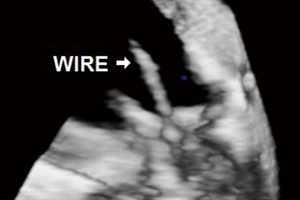Echocardiography of the tricuspid valve
Abstract
The tricuspid valve (TV), although occasionally considered “neglected” is the subject of renewed and increasing interest. Factors include an awareness that tricuspid value dysfunction is influential in patient outcomes, an improving understanding of valve anatomy and function and evolving techniques available to address tricuspid regurgitation. Tricuspid regurgitation (TR) can be classified as being due to primary diseases of the valve or functional in nature, with the majority being functional. Whilst it was previously believed that such functional TR, resulting from left sided disease, would resolve after correction of the underlying pathology this is now known not to be true. In fact, annular dilatation, TR and right ventricular dysfunction may all continue to progress after successful surgery on the aortic or mitral valve. Although there are many modalities with which to image the TV, this lecture will focus on echocardiography, primarily transesophageal echocardiography (TEE). In every patient undergoing cardiac surgery with TEE, a thorough and systematic examination of the TV structure and function should be performed, utilizing quantitative and qualitative measures with both 2D and 3D echocardiography. As the appearance of TR can be significantly influenced by hemodynamic factors, it is essential that echocardiography to investigate TR also be performed in the resting conscious state. Ideally, deciding whether the TV warrants operative attention at the time of planned cardiac surgery should be determined preoperatively based on a high quality transthoracic echocardiography (TTE) and relevant patient and surgical factors. This lecture aims to give an overview of the echocardiographic assessment of the TV, parameters available to grade the severity of TR, and how these may be utilized to assist the surgeon considering intervention. Whilst the surgical management at the extremes of TR (mild or severe) is relatively clear, the ideal intervention in intermediate grades, especially during concurrent left sided surgery remains uncertain and is the subject of ongoing research.
Cover






